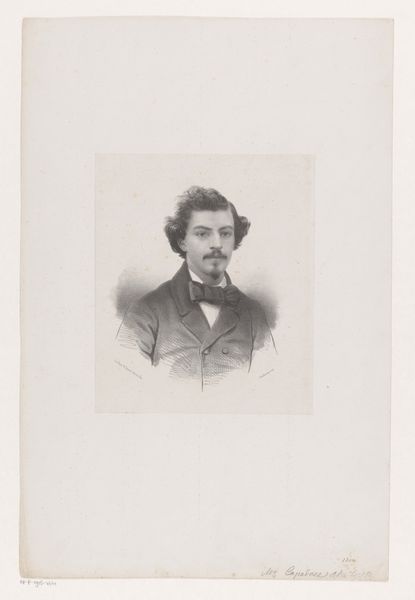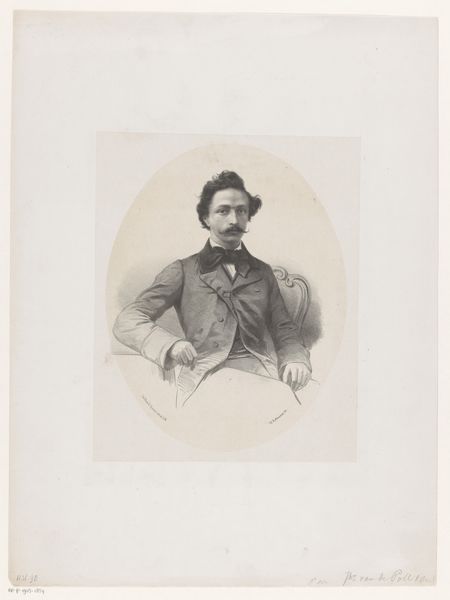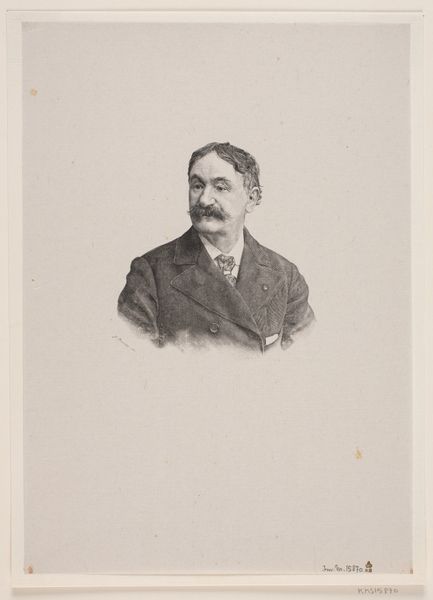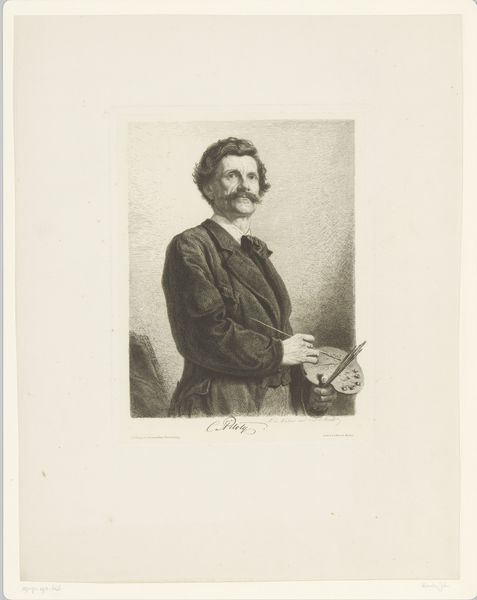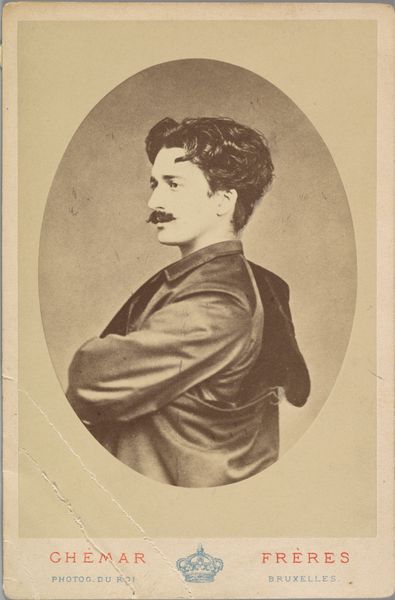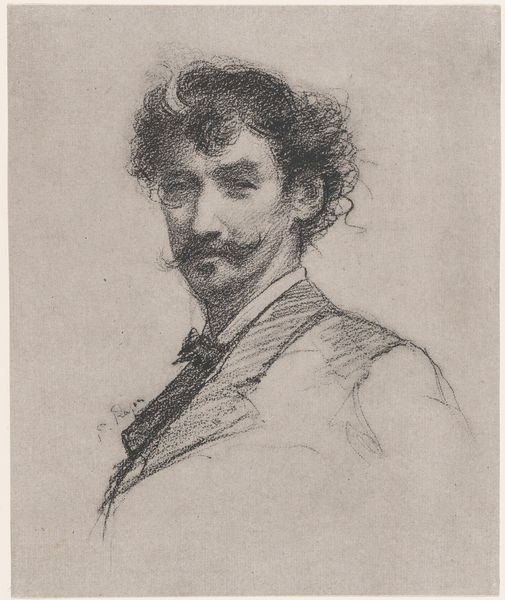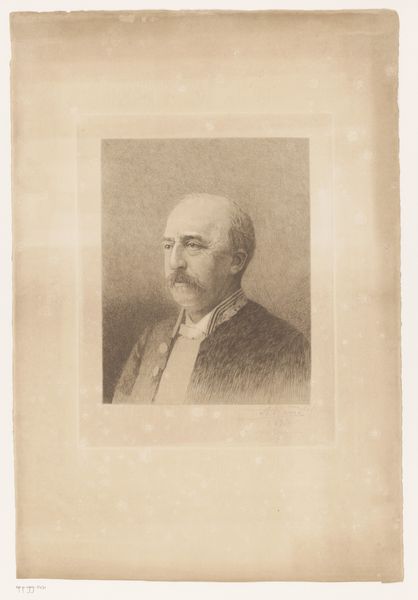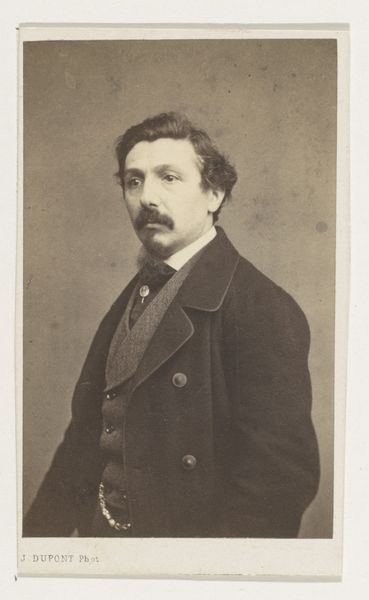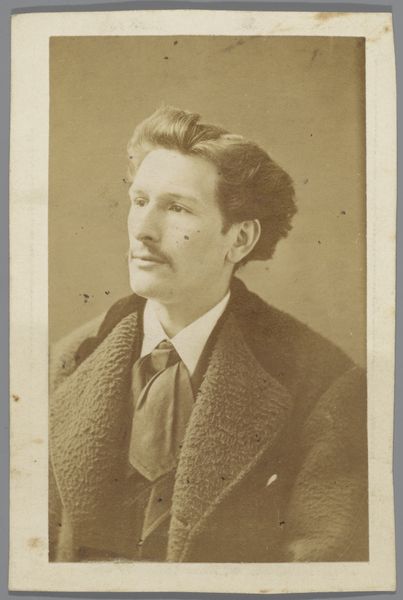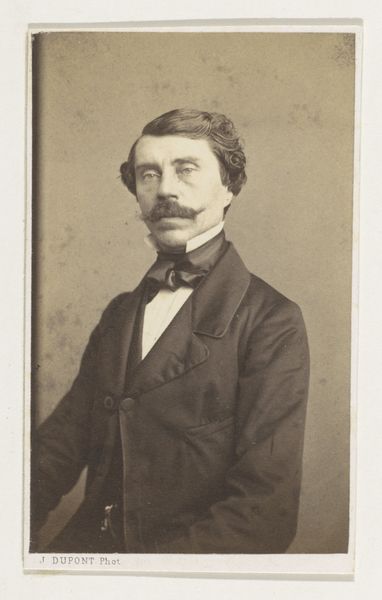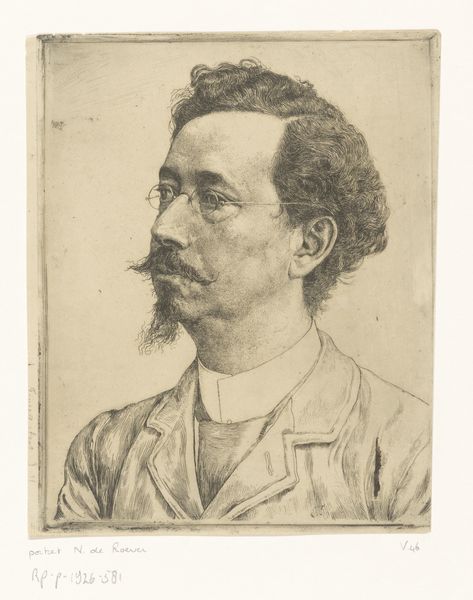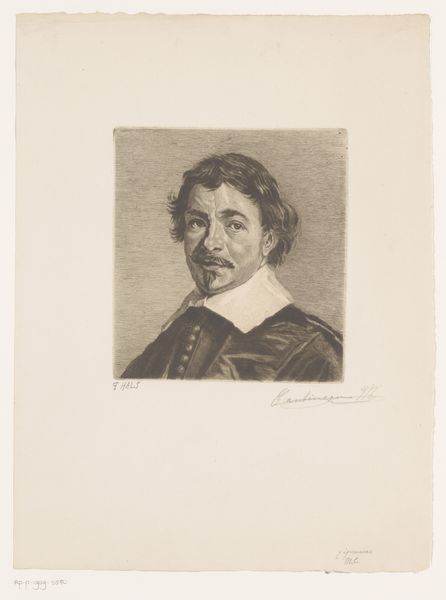
drawing, print
#
portrait
#
pencil drawn
#
drawing
# print
#
pencil sketch
#
charcoal drawing
#
charcoal art
#
portrait reference
#
pencil drawing
#
men
#
animal drawing portrait
#
portrait drawing
#
portrait art
#
fine art portrait
Dimensions: sheet: 9 1/8 x 6 in. (23.1 x 15.2 cm)
Copyright: Public Domain
Curator: Here we have Thomas Robert Way's lithographic print, "Whistler with the White Lock," created sometime between 1890 and 1900. Editor: The tonal range in this portrait sketch feels masterfully subtle, as if Way has caught Whistler in a moment of introspective intensity. There’s an enigmatic air around the figure. Curator: It's a study in contrasts, isn't it? Way, though a skilled printer, is often overshadowed by Whistler himself. Their complex professional relationship—Way printed many of Whistler’s lithographs—adds another layer. Was Way attempting to capture the public persona, the "dandy" artist? Or something more intimate? The power dynamic, as always, informs the gaze. Editor: Whistler’s defiant lock of white hair, which became his signature, really dominates. It's not merely a physical feature, but a bold declaration, almost an emblem of his artistic rebellion. What statements was Whistler communicating to his audiences through this strand? And how did this portrait affect that message? Curator: Absolutely. It’s interesting that the portrait was produced during a period of Whistler’s shifting reputation; while he remained a provocateur, his fame and influence within the art world had solidified. Prints like this one played a crucial role in disseminating his image, literally shaping his public perception. Think about how printed images circulated at the time. Editor: You know, the soft focus, particularly around the edges, reminds me of a photographic portrait. I'm wondering if that hazy treatment of line wasn’t intentional to evoke that then modern sensibility. Curator: A distinct possibility. Photography certainly influenced portraiture during this era. One could say Whistler recognized the need to meet the rapidly changing expectations of art consumption and, in some ways, aesthetic representation, to survive in the contemporary artworld. Way captured a man acutely aware of his image. Editor: And what a story those eyes tell! Way has created a sense of an artistic titan in the work; a self-made visionary who defied norms, a beacon of artistic defiance, as he likely wanted the world to see him. Curator: Precisely, that lock, that look. It solidifies the construction of his identity as an artist who controlled his image with the greatest precision. It really does prompt the questions of whose gaze, and what context, informed it. Editor: Seeing the visual markers associated with Whistler analyzed in this print reveals layers I hadn’t considered; now I’m left to examine how this image affects Whistler’s legacy as an icon.
Comments
No comments
Be the first to comment and join the conversation on the ultimate creative platform.
